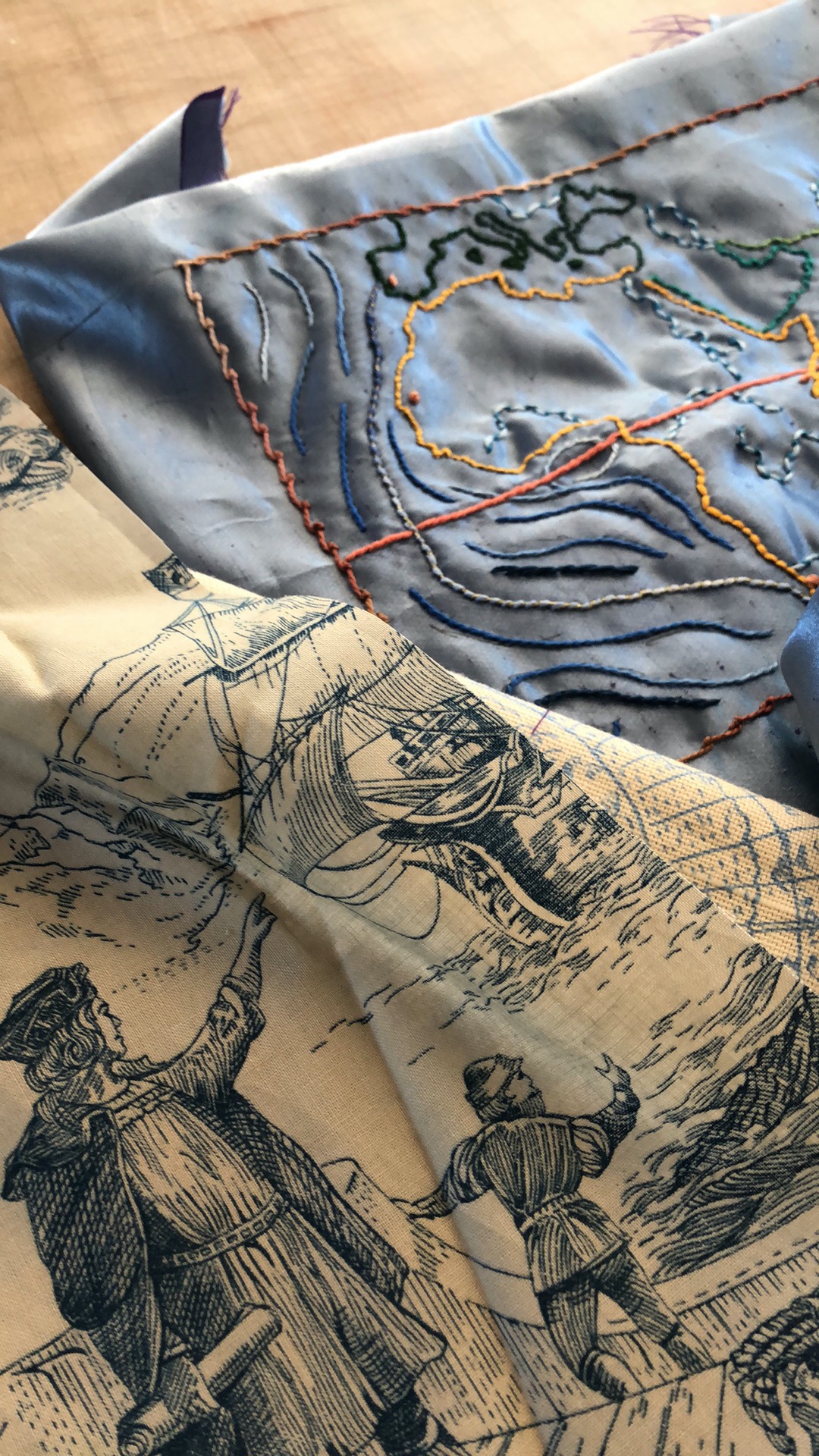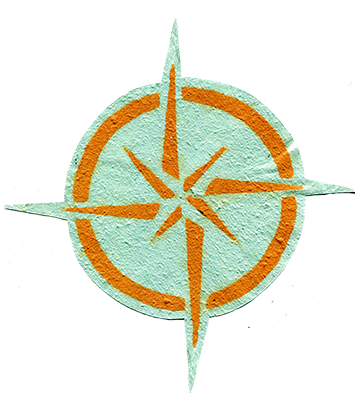Mythos












Act 1. The Rhinoceros
Over the course of three years, from 2016-2019, The Rhinoceros Project realized its first collaborative endeavor – to transform Albrecht Durer’s 1515 woodblock print The Rhinoceros into a life-size, 7 x 9’ communally-made embroidery that in turn is a matrix for an edition of watermarks in handmade paper. The rhinoceros in Durer’s print was an early colonial displacement, transported from its Gujurati home to Lisbon as a political gift. The watermark is a ghostly image, literally made through displacement of pulp. At the onset, we intended for the project to create space for conversations on loss, extinction, habitat decimation, memory, myth and revitalization.
Durer’s Rhinoceros
We see the story of Durer’s rhinoceros as a foreshadowing tale of the plight, today, of rhinoceros and the planet as a whole.
The rhinoceros that inspired Durer’s print was originally a diplomatic gift from Sultan Muzaffar Shah II, ruler of Gujarat, to Alfonso du Albuquerque, governor of Portuguese India, who sent the animal with her human handler to Lisbon to reside in King Manuel I’s menagerie. The rhinoceros was loaded onto a trade vessel and made the voyage around the continent of Africa, following the same route navigated by Vasco da Game almost 20 years prior that opened India to European colonization and competition for the valuable spice trade.
Upon arrival in Lisbon, the near-mythic creature - as the first rhinoceros in Europe for 1500 years - became an immediate sensation. King Manuel pitted her against an elephant in a famous duel to test Pliny the Elder’s assertion in his Natural History that the rhinoceros is the elephant’s mortal enemy. News of the spectacle spread rapidly through the land.
After the rhinoceros’ show had run its course in Lisbon, King Manuel, as a token of gratitude and in hopes of continued favor for expansion in Asia, decided to gift the rhinoceros to the Pope’s menagerie. The rhinoceros was loaded onto another ship and began the voyage to Rome. After disembarking briefly off the coast of Marseilles for a viewing with King Francis, the ship encountered a storm and capsized near Porto Venere on the Ligurian coast. Chained below deck, the rhinoceros drowned.
Albrecht Durer, in his Nuremberg studio, capitalized on this moment, publishing a broadside of this famous woodcut as a souvenir of sorts that was sold by the thousands.
Durer never saw the rhinoceros himself. He based his work on a description and a sketch, that is now lost. Despite inaccuracies in the image – the rhinoceros appears to be wearing armor, to have scales rather than skin, and includes a mythic horn on its shoulders his work became emblematic of a rhinoceros’ appearance. Many more people saw the print than saw the actual rhinoceros - and it was included in printed Natural Histories as an anatomical representation of the rhinoceros into the 20th Century.
The letterpress text above the image begins:
'On 1 May 1513 [this should read 1515] was brought from India to the great and powerful king Emanuel of Portugal at Lisbon a live animal called a rhinoceros. His form is here represented. It has the colour of a speckled tortoise and it is covered with thick scales. It is like an elephant in size, but lower on its legs and almost invulnerable….”
Currently, all species of rhinoceri are threatened, and if their species are lost, Durer’s print could once again become a significant relic as to how they are remembered.
Act 1. The Rhinoceros
Inspired by this print and the history, narratives, and individuals behind it, we, Anne Beck and Michelle Wilson, launched our collective, “The Rhinoceros Project.” The Rhinoceros Project traces its origins to the 2011 extinction of the Western Black Rhinoceros, the near extinction of the Northern White Rhinoceros - whose population is presently hovering at two infertile females, a 4-year-old child’s painting of a horned beast, a Facebook event: How is your rhinoceros inspiring you?, a commonality of print history and papermaking, and the papermaker’s ability to make an image out of absence.
In our first endeavor, we spent two years conducting traveling, participatory sewing circles to embroider a life-size version of Durer’s woodcut. During these sewing circles, the rhinoceros becomes a portal to dialogue and listening.
Completed in June 2018, the rhinoceros embroidery served as a matrix for a monumental sheet of handmade paper watermarked with the image of the rhinoceros. The raised threads displaced the pulp in the image areas to make the paper thinner, so that when light passes through the image appears. When dried, the handmade paper evoked the history of the print’s subject matter – a work of art where the image has been displaced, leaving behind a ghostly vestige.
Shortly before we began this project, the Western Black Rhinoceros was declared extinct. The year we launched the project, 2016, the Northern White Rhinoceros was down to six remaining individuals. In order to commemorate those six endlings from the year our project began, we plan to make an edition of six watermarks.
As of 2022, the Northern White Rhinoceros has only two remaining infertile females of the species left.
Our investigation into the Rhinoceros as an early colonial displacement evolved from our belief that in order to best engage social and environmental issues of today, we must dig deep into our personal and collective histories – going back to the beginnings of globalization.
Through the repetitive, meditative act of sewing, conversation evolves associatively and naturally, poetically moving from one tendril to the next, ebbing and flowing and falling quiet, opening space for contemplation. We learned early on that the sewing circles and the dialogues contained therein were equally as important to the project as the end goals. As our sewing circles continued, we found certain questions arising: to foment empathy, is a reconnection with the body a goal? Is it the first step in finding lasting answers to pressing environmental, socio-economic and political queries? How can craft create this connection? How can we revisit historical narratives through craft, to re-examine and re-contextualize them? How can craft mend rifts between polarized halves? How can participatory craft shift value systems?
These are questions on The Rhinoceros Project’s mind as we launched Circling the Map – a second large scale embroidery/watermark endeavor, through which we aim to harness the revolutionary power of embroidery and hand papermaking, filtered through an (art) historical lens, to illuminate a multitude of community’s answers to these questions.
